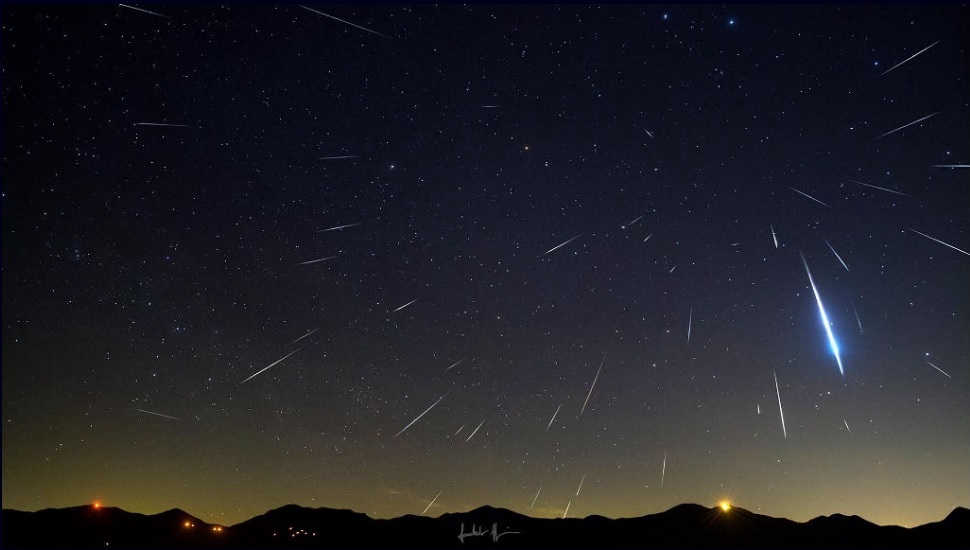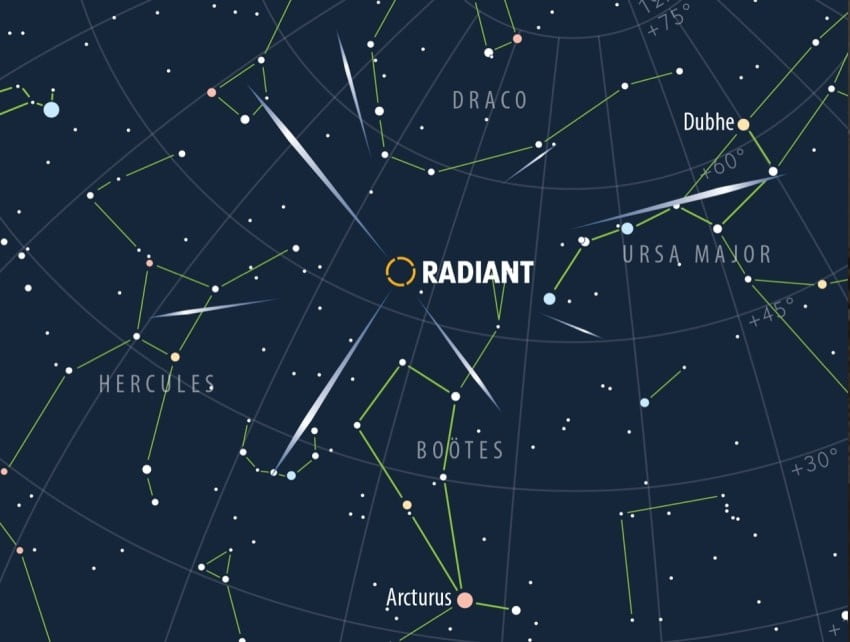The Quadrantids are one of the most amazing meteor showers. Firstly, it is the only shower bearing the name of the non-existent constellation Quadrans Muralis. Secondly, it has a very short period of activity — less than two weeks from the end of December to the beginning of January. And its maximum lasts only 5-6 hours. In 2024, according to astronomers, the most intense Quadrantids will be on January 4 at about 3 p.m. UTC time, that is, we have a chance to see them that evening as soon as the sky becomes dark enough.
The reasons for such an acute peak are still unclear, although there are several assumptions about this. The most plausible of them claims that the “jet” of particles entering the Earth’s atmosphere and observed as meteors was formed as a result of the collision of the asteroid 2003 EH1 with some smaller body. Observations indicate that during such collisions, narrow, extended swarms of debris can indeed occur, characterized by an increased concentration of matter per unit volume. Moving in its orbit, the Earth crosses such a swarm in a matter of hours.

The zenith hourly number of the Quadrantids can exceed a hundred meteors, which makes them the second most powerful meteor shower in the earth’s sky after the Geminids (active almost all of December). But this does not happen every year, besides, this maximum value is most often observed within a few minutes, and in terms of long periods of time, the activity turns out to be significantly less. Unfortunately, in early January 2024, the weather over almost the entire territory of Ukraine will be unfavorable for observations, although the aging Moon will practically not interfere with them. Under good atmospheric conditions, it is not difficult to “catch” this shower: its radiant in our latitudes does not hide behind the horizon.

After the end of the activity of the Quadrantids, a kind of “meteor lull” occurs, during which the minimum possible number of interplanetary dust particles occurs on the path of our planet. It is interrupted by the beginning of the action of the next sufficiently powerful shower — Lyrid. Its maximum this year falls on April 21.
Earlier, we reported that in December last year, a new meteor shower appeared in the earth’s sky.
Follow us on Twitter to get the most interesting space news in time
https://twitter.com/ust_magazine


